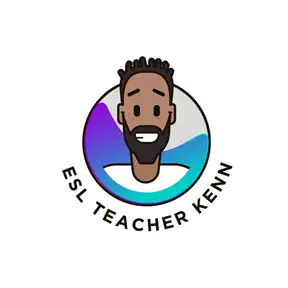B1 Using "to" to connect 2 actions: Should go VS Wants to go (Lesson 13, Box A1 Ex 1+2)
Hello, Students! This is Teacher Kenn. Welcome to another episode of intermediate English for work and travel. We are starting Lesson 13 of our book, English Sentence Structure. Box A1 teaches us how to connect 2 actions correctly. Exercises 1 and 2 are on pgs 130 and 131. If you are using the PDF, go to pages 143 and 144.
English Sentence Structure and Practices Free Online Access: https://drive.google.com/file/d/1TQi1CYB_cFo1XhL5McmYvdF5kvk-Ghzp/view?usp=drivesdk
Now, not very long ago, in lesson 11, we learned how to use Modal Auxiliaries like can, will, should and must. We learned that we use them together with actions like the first 2 examples in Box A1: George should go and George will go. On this lesson we will learn about actions that are very often used before another action, and in order to connect them correctly we have to use the word "to", with one o.
Look at the examples of this new pattern: George wants to go, and George plans to go. The most common mistake made by learning English speakers with this structure is to either omit the "to" that should always go between 2 actions, or add the "to" after a modal auxiliary. The expressions "George will to go" and "George wants go" are incorrect.
Let's read the examples and the actions within the box. Repeat after me:
Practice is the key to fluency and confidence. Repeat these verbs out loud and dictate them to a microphone to practice pronunciation and create real life sentences using the vocabulary to internalize it.
Let's go to Exercise 1, it's a substitution exercise. I will start with the sentence: He learned to speak English and give you a word to substitute. I'll give you a moment to say the sentence with the substitution I gave you and after that, I'll say the new sentence so you can compare and repeat after me for corrections. Right after that, I'll indicate the new word for the next substitution and so on.
Exercise 2 is very good to practice when to add the "to" or not. Remember that we never use "to" after a modal auxiliary like should. I will make a question about today and give you a word to use in the answer. You must answer "No, but..." and clarify that the event is tomorrow. After you say it, I'll give the correct answer so you can compare and repeat for reinforcement and corrections.
Before we wrap it up for the day, let me give you some extra practice. In the book English Sentence Practices, go to lesson 13, Exercise 1 on pages 184 and 185. That's pages 510 and 511 within the PDF.
Practice with this episode 3 times this week and leave your questions in the comments. Like this episode and follow the podcast or subscribe to my YouTube Channel and remember that English is Easy. You just need to practice. See you next class.
English Sentence Structure and Practices Free Online Access: https://drive.google.com/file/d/1TQi1CYB_cFo1XhL5McmYvdF5kvk-Ghzp/view?usp=drivesdk
Now, not very long ago, in lesson 11, we learned how to use Modal Auxiliaries like can, will, should and must. We learned that we use them together with actions like the first 2 examples in Box A1: George should go and George will go. On this lesson we will learn about actions that are very often used before another action, and in order to connect them correctly we have to use the word "to", with one o.
Look at the examples of this new pattern: George wants to go, and George plans to go. The most common mistake made by learning English speakers with this structure is to either omit the "to" that should always go between 2 actions, or add the "to" after a modal auxiliary. The expressions "George will to go" and "George wants go" are incorrect.
Let's read the examples and the actions within the box. Repeat after me:
Practice is the key to fluency and confidence. Repeat these verbs out loud and dictate them to a microphone to practice pronunciation and create real life sentences using the vocabulary to internalize it.
Let's go to Exercise 1, it's a substitution exercise. I will start with the sentence: He learned to speak English and give you a word to substitute. I'll give you a moment to say the sentence with the substitution I gave you and after that, I'll say the new sentence so you can compare and repeat after me for corrections. Right after that, I'll indicate the new word for the next substitution and so on.
Exercise 2 is very good to practice when to add the "to" or not. Remember that we never use "to" after a modal auxiliary like should. I will make a question about today and give you a word to use in the answer. You must answer "No, but..." and clarify that the event is tomorrow. After you say it, I'll give the correct answer so you can compare and repeat for reinforcement and corrections.
Before we wrap it up for the day, let me give you some extra practice. In the book English Sentence Practices, go to lesson 13, Exercise 1 on pages 184 and 185. That's pages 510 and 511 within the PDF.
Practice with this episode 3 times this week and leave your questions in the comments. Like this episode and follow the podcast or subscribe to my YouTube Channel and remember that English is Easy. You just need to practice. See you next class.

